Ollantaytambo, located in the Sacred Valley of Peru, holds a special place in my heart. There's so much to see, do, eat and learn. If you're someone who enjoys (mostly free) hikes, sipping coffee and being in the moment, learning about ancient cultures, and seeing how customs affect the present, then Ollantaytambo is more than worth your time.
Ollantaytambo is a place where you can almost tangibly feel powerful forces greater than mankind. Perhaps it's the majestic mountains, the faces carved in them, the beautiful Incan stonework, or the corn fields swaying in the wind. Most likely it's all of that and more. The aura of Ollantaytambo is unexplainable, but I will do my best to give you a thorough introductory guide on Ollantaytambo, along with additional articles to continue reading.
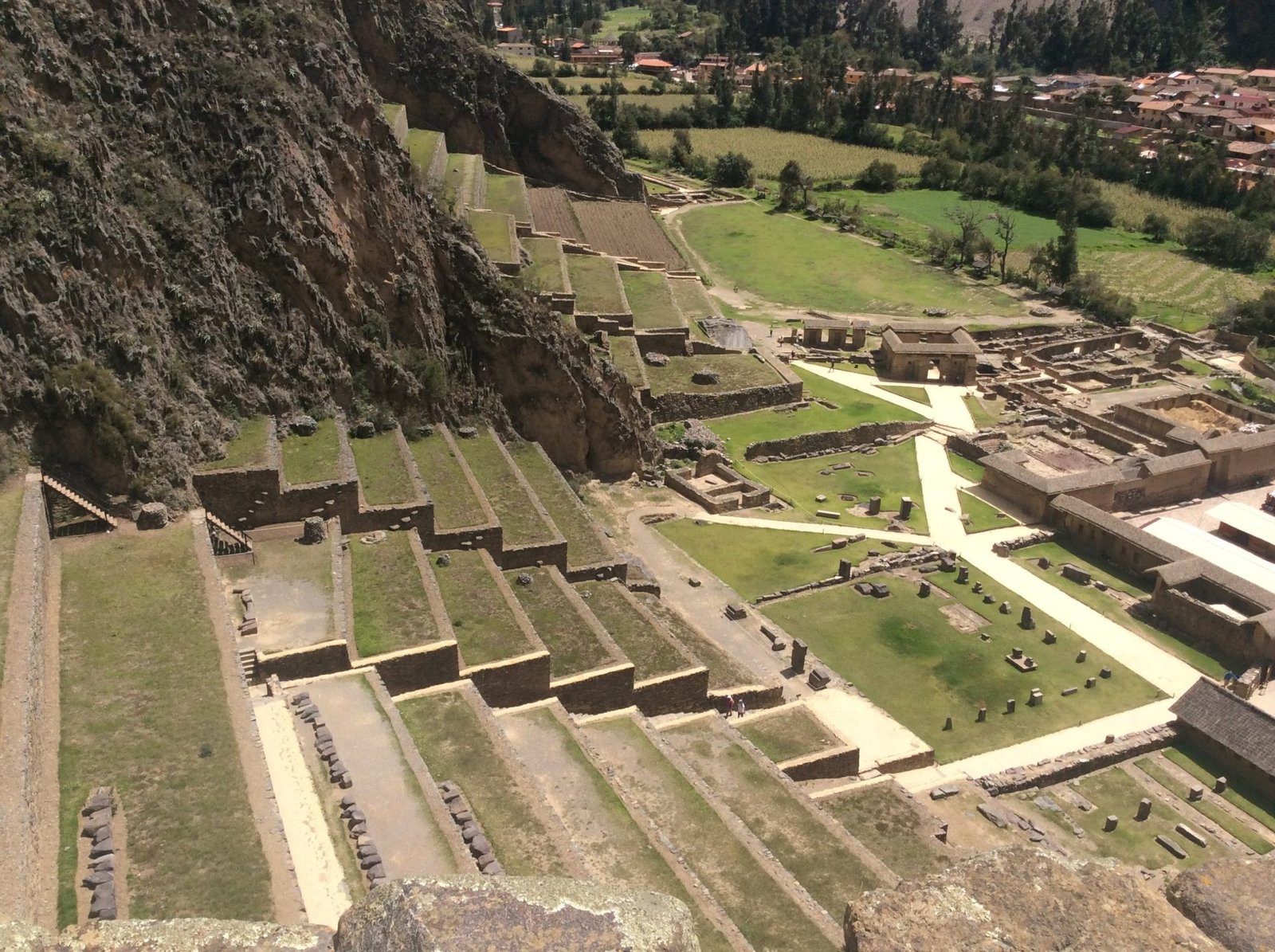
Terraces within the main ruins of Ollantaytambo
Ollantaytambo and the Incan Empire
The Incan Empire was the largest empire in prehistoric America, with parts of present-day Colombia, Ecuador, Peru, Bolivia and Chile. The capital, however, was Cusco, and it had a much larger influence on the surrounding area, now termed the Sacred Valley, than elsewhere.
Ollantaytambo is the only Incan town that is still occupied. It wasn’t conquered by the Incans until the 15thcentury by Inca Pachacutec, who rebuilt the town, installed aqueducts (which are still used), and started building the Temple of the Sun. Ollantaytambo became known as being a home to Incan nobility. The traditional doors located in Ollanta with one marking over them signify that Incan nobility used to leave there.
The most well-known tale about Ollanta and the Incan empire is Inca Manco’s successful resistance against the Spanish invaders. In 1532, Pizarro had already executed Atahuallpa, the last Incan ruler (although a half-blood). However, resistance to the Spaniards was still running strong, and in 1537 Inca Manco retreated to Ollanta. He retreated to high ground (where the main Incan ruins are and the uncompleted Temple of the Sun is located). He held the Spanish invaders back and flooded the plains region, driving back the Spanish forces. Afterwards, Inca Manco retreated to Vilcabamba in the jungle and the Spanish then captured Ollantaytambo.
The Importance of Ollantaytambo
It’s hard to know how important Ollantaytambo is in regards to ancient ruins, but it’s the second-most well-preserved Incan site. Recent work has also shed light on how Ollantaytambo is linked with other great ancient sites across the world.

How can this type of handiwork not be important?
According to Jim Alison’s work, Ollantaytambo is geographically aligned with other important archaeological sites in the world in what’s known as the “great circle.” Some theories posit that this circle is what used to be the old equator, prior to a shifting of the poles.
As Alison states in Part 1 – The Great Circle,
Easter Island, Nazca, Ollantaytambo, Paratoari, Tassili n'Ajjer and Giza are all aligned on a single great circle. Additional ancient sites that are located within one tenth of one degree of this great circle include Petra; Perseopolis; Khajuraho; Pyay, Sukothai and Anatom Island.
Near Ollantaytambo, Machupicchu and Cuzco are within one quarter of a degree. The Oracle at Siwa in the western Egyptian desert is within one quarter of a degree. In the Indus Valley, Mohenjo Daro and Ganweriwala are within one quarter of a degree. The ancient Sumerian city of Ur and Angkor temples in Cambodia and Thailand are within one degree of the great circle. The Angkor temple at Preah Vihear is within one quarter of a degree. - Jim Alison
Alison goes on in part 9 to pinpoint options where the lost city of Atlantis may be located based off of locations that would also be on the great circle.
Theories abound as to what all of this could mean: I personally have no idea and have made it a goal of mine to read more into it. However, it seems to me that it has to be more than just a coincidence. Many of the wonders of the world located exactly on this circle or within one tenth or one quarter of a degree? Whether Atlantis is real or not, there has to be some type of reason for this.
If you're intrigued by all of this, Graham Hancock is also a good source of information, and has two books on this subject matter.
Weather in the Sacred Valley

A typical looking day in Ollantaytambo (#nofilter)
The Sacred Valley of Peru only has two seasons – a dry and a rainy season. The dry season runs from around April to October, and there the rainy season starts. Unsurprisingly, peak travel to the Sacred Valley correlates with the dry season – temperatures are hotter, the sun is out and, of course, there’s less rain.
However, Ramone and I were there during the month of January. Although on some days it was quite foggy, the rain usually held off until around 3:00 p.m. (usually right when we went into work at the ChocoMuseo). And even then the rain was rarely very heavy or torrential. The benefit of going during the rainy season to Ollantaytambo is that there are way less tourists, and everything is really green! Temperatures are still quite hot, so T-shirts and light long-sleeve shirts are all you need during the rainy season here.
Perhaps the best time to travel to the Sacred Valley is during March, where you can still enjoy most of the benefits of the dry season, but still get to see flowers and such. Bear in mind that with high altitude, the sun tends to be stronger, so even during the rainy season you’ll want to bring some sunscreen.
The Layout of Ollantaytambo and Surrounding Area
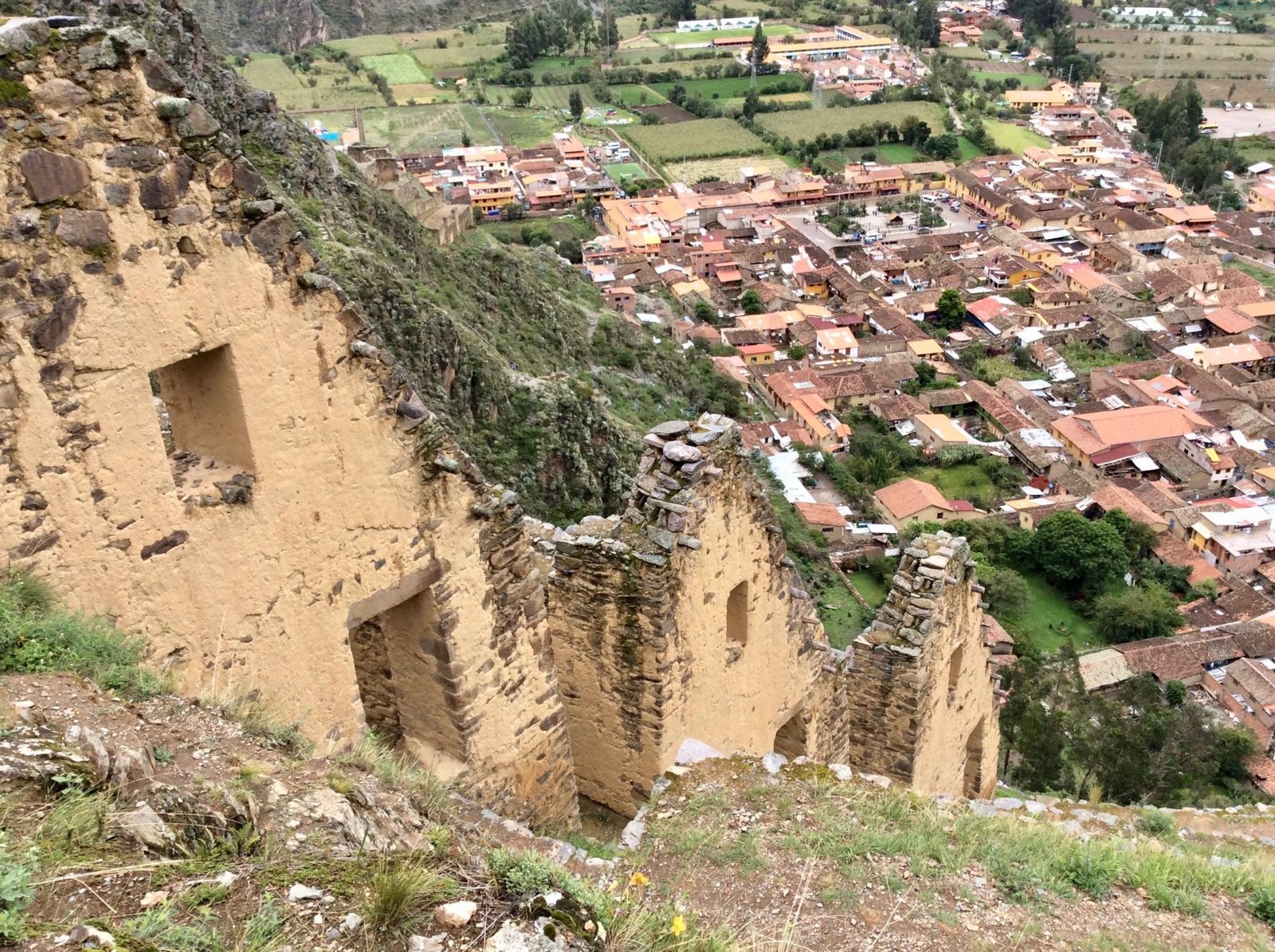
Part of Ollantaytambo, seen from the free ruins of Pinkuylluna
The layout of the town of Ollantaytambo is very straightforward. Even for someone as directionally challenged as me, it’s pretty much impossible to get lost in Ollantaytambo proper (going on day hikes to nearby areas, though, is a different story).
The original Incan settled area of Ollantaytambo is designed with four longitudinal streets that are intersected by seven parallel streets. This section can be seen to the right of the main (and only) entry road when entering into Ollantaytambo. The streets are old and narrow, and Lares Calle leads to the free ruins of Pinkuylluna, which are believed to have been storage granaries. Right next to Pinkuylluna there’s also a face in the mountain, to which it’s said to be of Wiracocha, the Incan God.
The old, open-faced aqueduct structure that was built by the Incans is still used today. Occasionally you’ll see grown people (usually men) washing themselves off using the water, or children urinating into it. You can’t drink the tap water in Ollantaytambo, so unfortunately bottled water it is (Ramone and I did boil the water to make tea, although I’m pretty sure that you’re not supposed to do that. We didn’t get sick, though. At least not yet).
Right past the old structure of the town of Ollantaytambo is the road you can take to do a day hike to the ruins of Pumamarca. This street mainly runs parallel to the Río Patacancha. After this street and before the main ruins there are large cornfields that dominate the area. There are no fences or anything of the sort, so you can explore this area as well (but of course don’t trample anyone’s plants).
The main road leads directly to the Plaza de Armas that the Spanish built, which has a large variety of coffee shops and eating options (although the best eating options, in my opinion, are not located directly within the Plaza). And if you continue going on the main road, it also goes to the Ollantaytambo Ruins, which you can easily see. A quick left at the end takes you to the railway station where you can go to Aguas Calientes on your way to Machu Picchu.
Going Towards the Inca Bridge
The other part of the town requires crossing through the Plaza de Armas, where there’s a small local market, some local restaurant options, and houses. This road leads down to the Incan bridge that crosses the Urubamba River, and is the route you’d take to hike up to the quarries or the Incan Sun Gate. These paths are actually decently labeled (large signs right after you cross the Incan bridge show you which ways to go, but Ramone and I still managed to go the wrong way the first time). If you go the opposite way of the quarries (so, a left after the bridge, the flat way through corn and quinoa fields, rather than uphill), this will take you to the nearby town of Pachar, where a lovely brewery is located. Additionally, it’ll take you to the Naupa Iglesia ruins and to a waterfall, although the waterfall is quite a hike from Ollantaytambo. To get to either of those, you’d take a right when getting to the rail station area in Pachar (there’s a sign of a waterfall pointing you down the right path).

The road towards Pachar, coming from Ollantaytambo
Pachar also isn’t far from the town of Moray, where there are the Maras Incan ruins and Salineras. If you take a bus or taxi to Moray, you can walk from Salineras to the main road near Pachar and grab any van to get back to Ollantaytambo. Simple enough and saves you some money.
Culture & Religion of Ollantaytambo
If the views and ruins aren’t enough, one of the coolest aspects of Ollantaytambo is how well-preserved their culture is. Many residents wear traditional clothes, and there are a lot of women who sell handmade bracelets, scarves and hats in the plaza. A lot of residents of Ollantaytambo also still speak Quechua: sometimes they have distinct accents while speaking Spanish, usually signaling that they learned Quechua first (this is particularly true for farmers that we encountered).

The celebration of Three Kings Day in Ollantaytambo
The people of Ollanta have created a unique fusion of ancient beliefs with Catholicism. They celebrate Catholic religious holidays with great fervor, yet also incorporate their own rituals into these Catholic festivities.
Viracocha, the Creation God
Viracocha was the creation God of the Incas, although belief in Viracocha actually pre-dates Incan times. Prior to creating man and woman, it is said that Viracocha created a race of giants that he then had to punish via a great flood.
It is believed that Viracocha created the first man and woman from Lake Titicaca (located half in Bolivia and half in Peru now), who went on to be Manco Capac (the founder of the Incan Empire) and his wife Mama Ocllo. After creating man, woman, the sun, moon, and stars, Viracocha disappeared by walking on the water of the Pacific Ocean.
As explained by Brian Foerster in the linked article, “Disappearance of the Children of Viracocha”, evidence does show that the Inca originated from the Tiwanaku kings and queens, whom were located on the shores of Lake Titicaca. (Read the linked article if you want some further information about a theory positing that the Incas were a race of tall, white, red-haired gods.)
Getting to Ollantaytambo from Cusco

Don't worry, this isn't the main road to Cusco
If you’re coming from Cusco, which most people probably will be, then Ollanta is just an easy van ride away. The other option would be to take the lovely but over-priced train.
By Van
The vans are located on Calle Pavitos and Avenida Grau in Cusco, a 10 minute walk from the center (or you could take a taxi there if you want to). There’s always a van available, and it waits until getting completely full before setting off. The vans tend to fill up super quick, so the wait isn’t long.
The trip is 2 hours, and costs 10 soles! The best bargain by far. The views are also absolutely incredible (of course, you’re on public transportation so there isn’t going to be any stopping to take photos).
Occasionally, if the van doesn’t have enough people to go to Ollantaytambo you’ll stop in Urubamba and transfer to a van that’s going to Ollanta. The price is the same, but split up – so 7 to get to Urubamba and then another 3 from Urubamba to Ollanta.
By Train
The train from Cusco to Ollantaytambo is slightly shorter than the van ride, but vastly more expensive. Tickets start at about $50 one-way, and go up from there. We steered clear from the trains because we weren’t going to fork out that kind of money.
By Taxi
If you’d rather take a taxi ride so that you can stop whenever you like, you can try to bargain with taxi drivers and see how much they’d charge you. Taxis in unmarked cars will charge you a lot more than marked taxis. I don’t know the going rate, but again the benefit of a taxi is that they can tailor the route more to what you want to do, and areas that you want to stop for some beautiful photos. Additionally, they aren’t packed full of people like the vans are, so if you want some breathing room this will be a better option for you.
Liking this post on Ollanta? Sign up to receive monthly emails keeping you up to date on my travels.
Things to Do in Ollantaytambo
Even though Ollantaytambo is small, there's still a ton to do here! I've written more extensive posts about the following topics:
Exploring the Ollantaytambo Ruins
The ruins that are a part of the boleto turistico in Ollantaytambo are the biggest draw to this area. They're visible as you enter Ollantaytambo, and take about a full day to explore. Check out the details of this trip here.
Going on Free Day Hikes
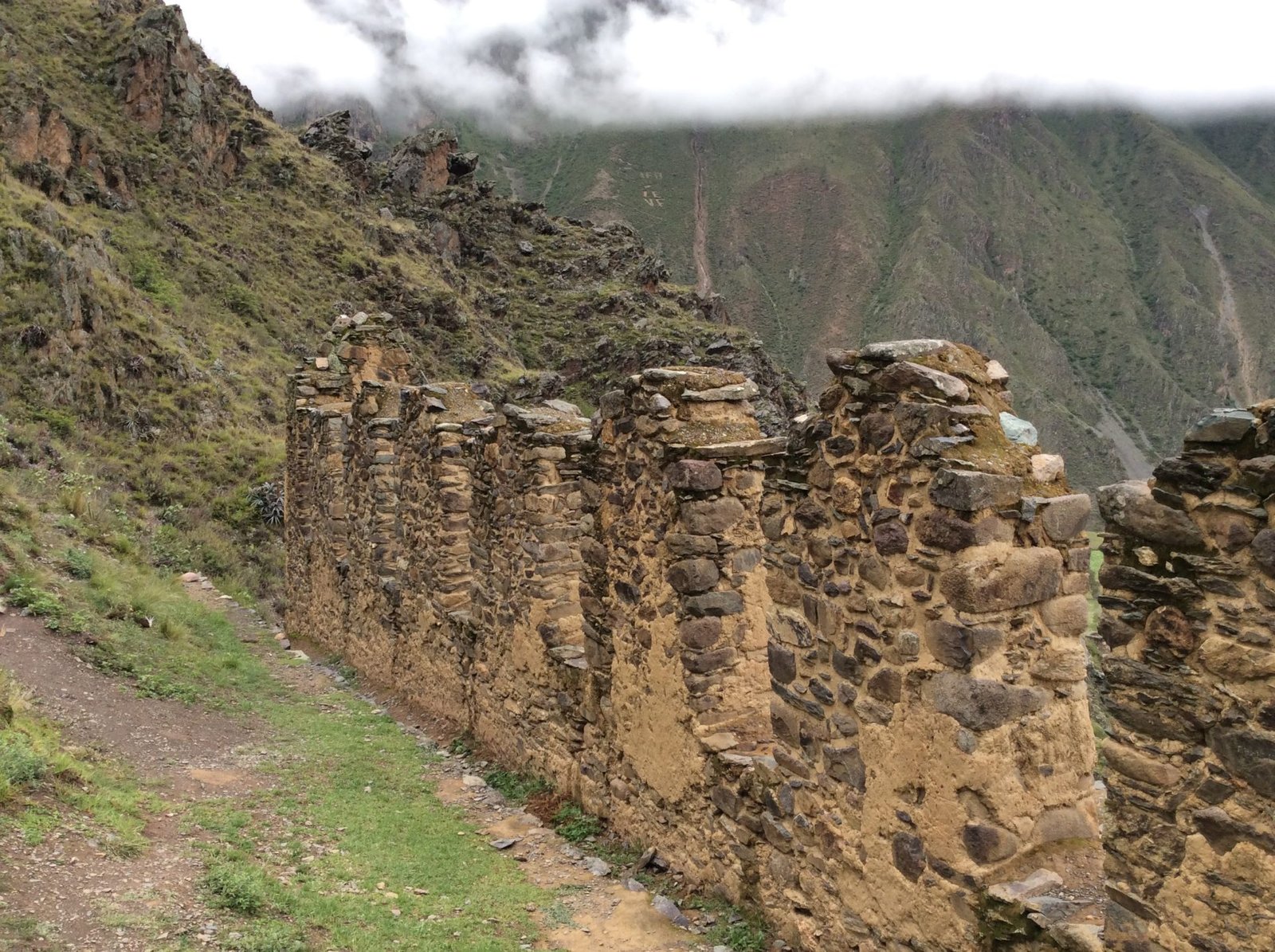
Part of the free ruins of Pinkuylluna
There are so many free hiking options here that I wrote a post detailing the 5 best free hikes from Ollantaytambo! Pinkuylluna is just the tip of the iceberg when it comes to options.
Exploring Other Nearby Cities
I love to hike, but sometimes I want to see cities and chill in hot springs for a day (or night). There are options such as Talca, Urubamba and Lares that are nearby: see the details of those trips here.
Drink Pisco Sour, Check out a Nearby Brewery & Eat Good Food
C'mon, this is Peru. We have to talk about food and drink options, don't we? It isn't complete if you're not trying some yummy guinea pig and sampling local craft brews. Read my top food and drink recommendations for Ollantaytambo.
Hotels and Hostels in Ollantaytambo
As this town is a pretty big tourist attraction and so close to Machu Picchu, there are hostels in abundance in Ollantaytambo! Ramone and I were provided private lodging, so we of course didn’t have to stay at a hostel or hotel in Ollanta. Unless you’re traveling during peak season, you wouldn’t even have to book in advance if you’d rather just show up and find a spot.
The Albergue – This hotel is by far one of the fancier options in Ollanta. It’s located close to the train station and is quite posh. The Albergue also uses locally sourced produce for their restaurant and has a community school (although most restaurants use locally sourced food, it’s more the norm than something above and beyond).
Picaflor Tambo Guest House and Mama Simona Hostel - I’ve heard good reviews about both of these spots. Honestly, if all you’re looking for is a bed to rest your tired body after a bunch of day hikes, then just find a cheap option and check in. You can always switch hostels since the town is so tiny!
Other Things to Consider
A few other side points about Ollantaytambo to take into consideration before arriving.
Laundry
Ollantaytambo doesn’t have a laundromat. So, if you have the option to wash your clothes before you arrive, do it! The only options they have are random stores that will wash and dry your clothes for you. They charge by the weight of your laundry bag(s), and it’s definitely not the cheapest option. Ramone and I did this once and I believe we paid around 40 soles ($13) for our two bags of laundry. We stayed on the roof of a family’s house (they had turned one area into a room, our bedroom, as well as a small bathroom, and then there was a small outdoor kitchen on the roof). The family had a washer, however they told us that we couldn’t use it (still unsure why), but there was a big industrial sink up there so we would actually wash our clothes by hand. Since we were there for a month we weren’t willing to sink 40 soles another couple of times. All that hiking tended to leave our clothes a dusty mess.
Partying/Alcoholism
Although there aren’t a whole ton of bars, Ollantaytambo does have some issues with alcoholism, particularly with men. We knew of a few different females where their husbands would go out for a night and not come back until the next morning, or until a day or so later.The festivals in particular have some raucous, all-night partying. Some of it is all in good fun and some of it is indicative of a larger problem in the area. This is just something to keep in mind, not something that should make or break the experience.

Festivities last all night for multiple days here
Getting to Machu Picchu from Ollantaytambo
Okay, Ramone and I did not go to Machu Picchu.I know, I know, it’s a sin. We decided that we’d rather spend time getting to know the rest of the Sacred Valley, and focus on checking out many of the options on the boleto turistico, rather than cashing out for Machu Picchu. If we had gone to Machu Picchu, we wouldn’t have been able to do most of the other things that we did our last week in the Sacred Valley. Machu Picchu is expensive. The ticket alone is about $50, and that’s an unavoidable expense.
But, since we were so close we did learn a lot about the options to get to Machu Picchu from Ollanta.
By Train
Train is by far the most popular way to get to Machu Picchu. You can take the train from Ollantaytambo to Aguas Calientes, and then another quick bus (or hike) up to Machu Picchu. As stated before, the train is expensive. I’d recommend booking your tickets beforehand as well.
By Shuttle Bus
There are a few different hostels and restaurants throughout Ollantaytambo that sell shuttle buses that go almost all the way to Aguas Calientes. This is a cheaper option, albeit slightly less comfortable and quite a bit longer (4-5 hours). You get dropped off at hidroelectrica, and walk the rest of the way to Aguas Calientes. We were quoted 45 soles per person for the bus, which compared to the train is quite cheap.
By Walking
Walking is obviously the cheapest option to get to Aguas Calientes, but is not only the longest but technically isn’t allowed. Essentially, you’d have to follow the train tracks to Aguas Calientes. The catch is that there are guards patrolling certain parts of the tracks so as not to let people walk there for free (and also because it can be a little dangerous). Peru, for good reason, wants to make sure that the vast majority of tourists take the most expensive train option, and so if you’re caught on the tracks they will most likely make you turn back (we met two people who tried to walk the tracks and they were forced to turn back).
If you’re not caught, the trip itself is said to take about 7 hours walking, although it’s completely flat so it doesn’t sound like a bad enough trek.

Want to Learn More About How We Traveled in Peru?
View Our 1 Month Budget Itinerary
Find out about where we went, how much we spent, transportation details for each location, and more!
Final Thoughts
If you haven’t caught on, I really, really loved being in Ollantaytambo. If you want to stay for a longer period of time and save some money, consider doing a Workaway program, such as working at the ChocoMuseo there. Keep on traveling, and certainly make sure to put Ollantaytambo and the rest of the Sacred Valley on your list of adventures.
Liked this post? Pin it!


Subscribe to receive Snook Outta Water's monthly newsletter with exclusive updates and content.
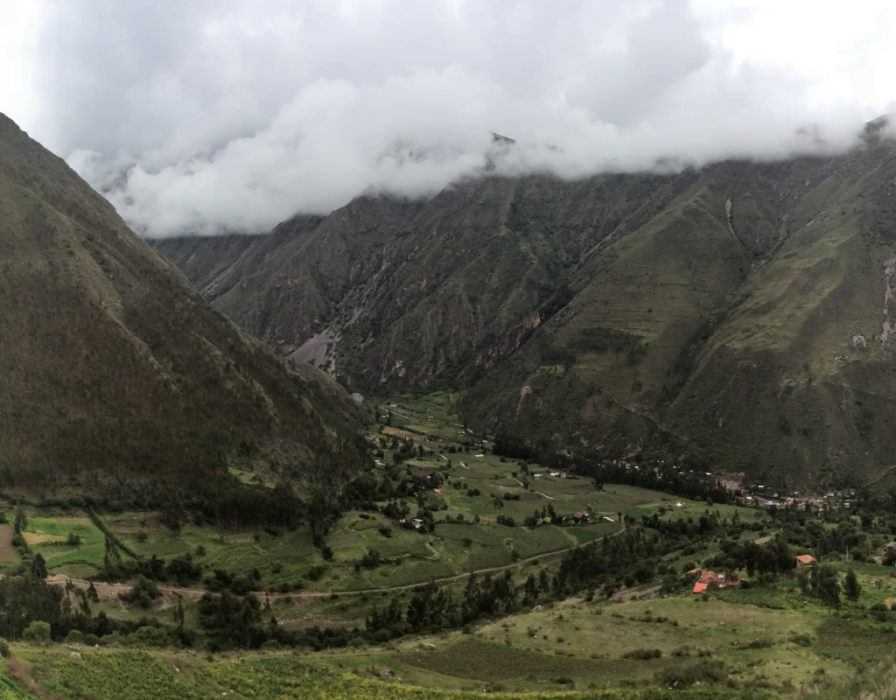
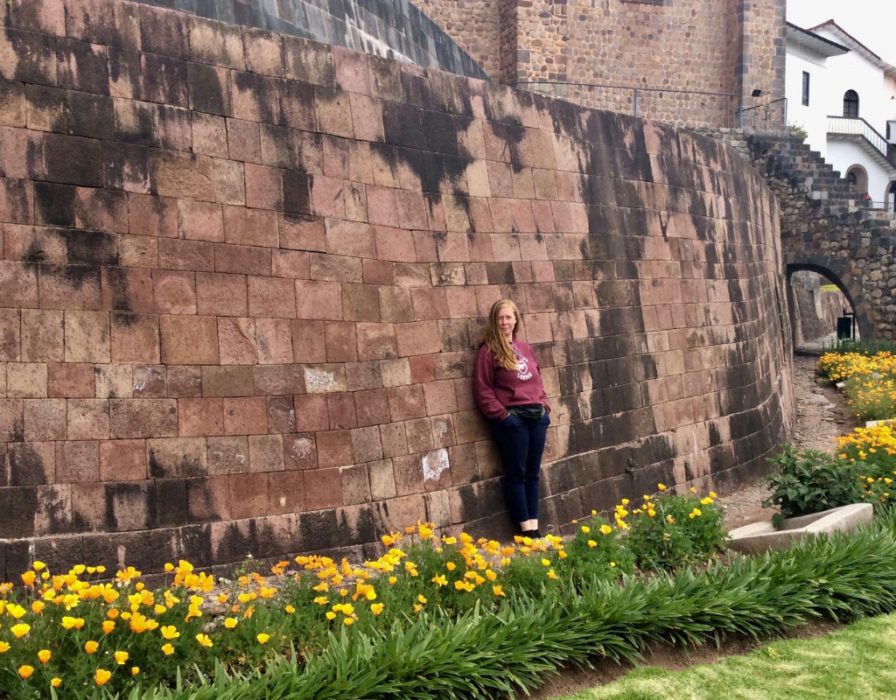
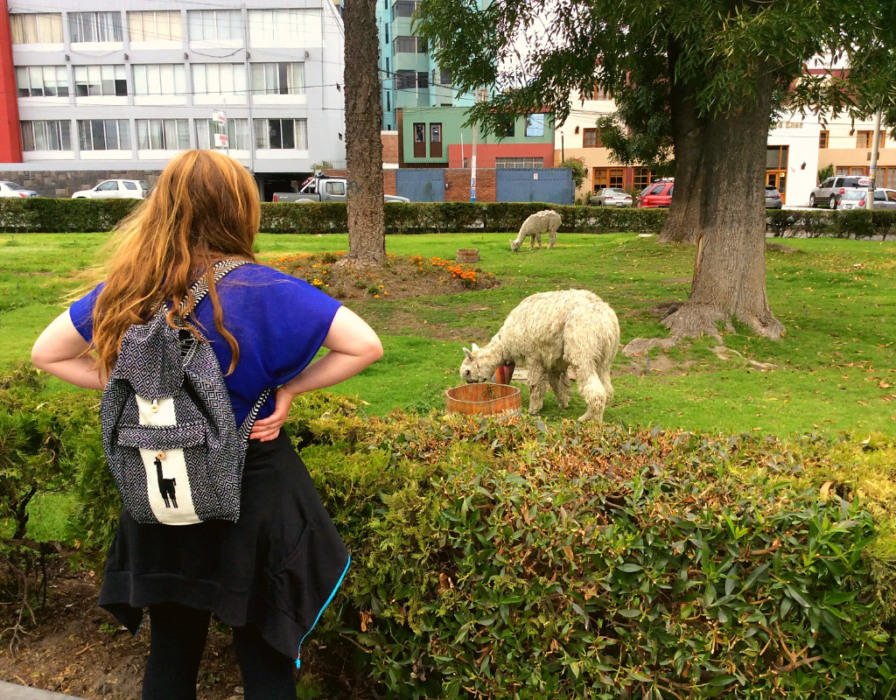
Pingback: Should I do a Workaway Program? Everything You Need to Know About Workaway - Snook Outta Water